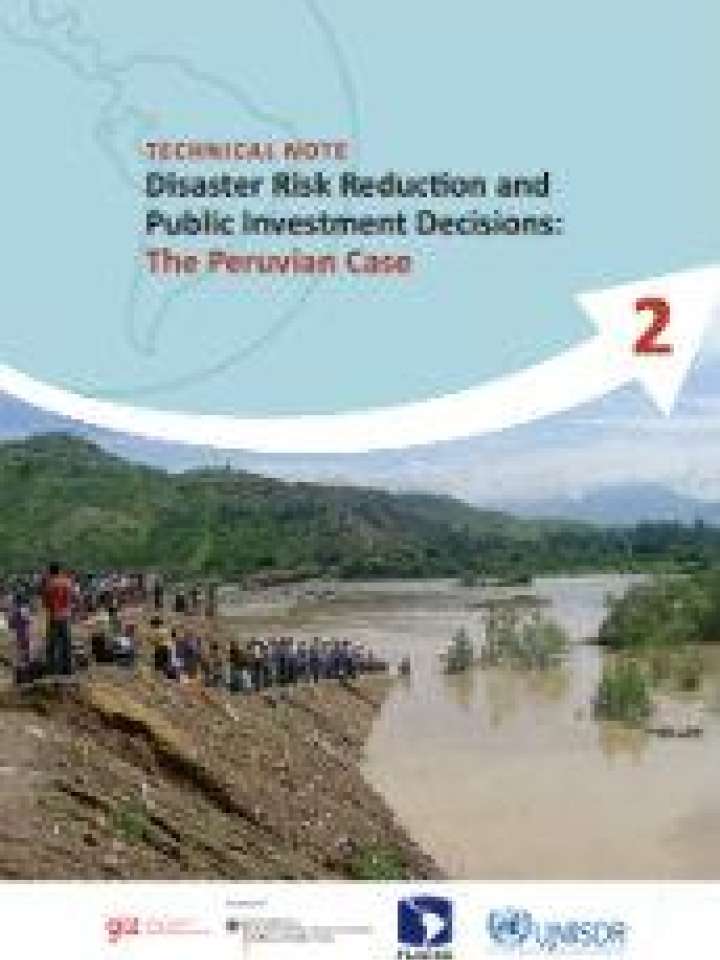Disaster risk reduction and public investment decisions: The Peruvian case
The objective of this technical note is to document the Peruvian experience with incorporating disaster risk management in public investment decision-making. This process is considered in the light of the overall advances achieved in the promotion of disaster risk reduction in Peru, particularly during the last decade. The narrative is primarily based on secondary documentary sources and essentially provides an English language summary of analysis mostly written in Spanish to date.
The document is structured in the following way:
Following the introduction, the second section summarizes the principle goals and the institutional structure that was laid out by the recent 2011 law which created the country’s first National System of Disaster Risk Management (SINAGERD). Factors and processes that help explain the writing and passing of this new law are outlined. This provides a brief background and framework for understanding Disaster Risk Management (DRM) policy and institutional structure in Peru.
The third section summarizes the generic process that has led to public investment decision-making informed by disaster risk reduction (DRR) in Peru over the last 10 years. The incorporation of the disaster risk management approach in public investment began in 2004, driven by two public investment project viability criteria: sustainability and social profitability. The recently passed law of SINAGERD (2011) reinforces the process and, at the same time, validates the conceptual and methodological framework applied in the National System for Public Investment (SNIP). Motivating factors and contexts, as well as significant events in the process, will be closely analysed.
The fourth section summarises the specific instruments and methods used for incorporating disaster risk analysis and management in public investment decision-making and provides an example of the use of risk analysis and cost-benefit calculations.
The final section provides some concluding thoughts and observations about ongoing processes and future challenges, like the recent updating of concepts and methods with climate change considerations.
